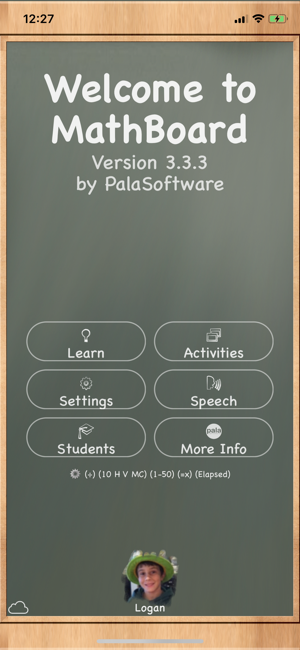Educational Technology in Teaching and Learning is an important and challenging aspect in higher education. The first theories on human behavior as behavior affected by technology are discussed in this essay.
These learning theories are behaviorism, cognitivism, and constructivism. They provide a pedagogical and/or andragogical basis for understanding how students learn.
These learning theories are behaviorism, cognitivism, and constructivism. They provide a pedagogical and/or andragogical basis for understanding how students learn.
Also, some of the approaches to teaching with technology, use of the best technological tools and appropriate type of instruction to enhance learning under Bloom’s taxonomy are included. A general perspective is given of the advantages and disadvantages that technology offers for education.
http://atlante.eumed.net/educational-technology-teaching-earning/
LESSON 4:
https://www.google.com/search?q=instructional+software&rlz=1C1CHBF_enPH805PH805&sxsrf=ACYBGNQuAhcpIWzHvhmJofEH1QGJmZqW0g:1579663258461&source=lnms&tbm=isch&sa=X&ved=2ahUKEwjDnoqboJbnAhU673MBHSRmBLIQ_AUoAXoECAsQAw&biw=1350&bih=591#imgrc=ER-JEmmvPefNRM:
WHAT IS INSTRUCTIONAL SOFTWARE?
Instructional software is programs designed specifically to deliver or support one or more kinds of learning activities. This software is designed specifically for learning. It can be used in the classroom in a number of ways. These ways include drill-and-practice, tutorial, simulation, instructional games, and problem solving.
https://chandaschauger.wordpress.com/2013/09/05/82/
FOUR CATEGORIES
EXAMPLE:
The Geometer’s Sketchpad® is the world’s leading software for teaching mathematics. Sketchpad® gives students at all levels—from third grade through college—a tangible, visual way to learn mathematics that increases their engagement, understanding, and achievement. Make math more meaningful and memorable using Sketchpad.
https://www.keycurriculum.com/
1.Tutorials
2.Simulations
3.Drill-and-Practice
4.Educational Games
1. TUTORIALS
The benefits of tutorials include immediate feedback, motivation, time saving, and self-contained and self-paced unit of instruction while the disadvantages include criticism by constructivists, lack of good products, and reflect only one instructional approach. Ways to integrate this strategy into the classroom include self-paced reviews, alternative learning strategies, and instruction when teachers are unavailable.
EXAMPLE:
https://www.keycurriculum.com/
 | ||||||
Simulation types include physical, iterative, procedural, and situational. The benefits include compressed time; slow down processes, student’s involvement, safe experimentation, saves money and resources, repetition with variations, and observations of complex processes. The disadvantages include accuracy of models and misuse of simulations. To integrate this into the classroom some strategies include replacement or supplement to lab experiments, role-playing, and field trips. https://chandaschauger.wordpress.com/2013/09/05/82/ EXAMPLE: MATLAB is a high-performance language for technical computing. It integrates computation, visualization, and programming in an easy-to-use environment where problems and solutions are expressed in familiar mathematical notation. 
3.DRILL AND PRACTICE
The term drill and practice is defined as a method of instruction characterized by systematic repetition of concepts, examples, and practice problems. Drill and practice is a disciplined and repetitious exercise, used as a mean of teaching and perfecting a skill or procedure. As an instructional strategy, it promotes the acquisition of knowledge or skill through systematic training by multiple repetitions, rehearse, practice, and engages in a rehearsal in order to learn or become proficient. Similar to memorization, drill and practice involves repetition of specific skills, such as spelling or multiplication. To develop or maintain one’s specific skills, the subskills built through drill and practice should become the building blocks for more meaningful learning. https://link.springer.com/referenceworkentry/10.1007%2F978-1-4419-1428-6_706 EXAMPLE: MathBoard® is a highly configurable math app appropriate for all school aged children. Beginning in kindergarten, with simple addition and subtraction problems, through elementary school where learning multiplication and division can be a real challenge. MathBoard will allow you to configure the app to best match the abilities of your individual child/student.
4.EDUCATIONAL GAMES
1.Educational games are those intentionally designed for the purpose of education, or those entertainment games that have incidental or educational values. Educational games are designed to help people understand concepts, learn domain knowledge, and develop problem solving skills as they play games. Learn more in: Designing Engaging Educational Games and Assessing Engagement in Game-Based Learning
2.Are games specifically designed to teach a certain subject, expand concepts, reinforce development, understand an historical event or culture, or learn a skill. Learn more in: Technology Enhanced Learning and Education
3.Refers to games designed with educational purposes in mind. Learn more in: Science Learning Games for Mobile Platforms
4.Games explicitly designed with educational purposes. Learn more in: Using Game Development to Teach Programming
5.An instructional approach that presents educational content in a game format. Learn more in: Motivating By Design: Using Digital-Game Based Learning Techniques to Create an Interesting Problem-Based Learning Environment
6.Games designed with explicit educational goals that are intended to support processes of teaching and learning. Learn more in: Perceptions of Gender Stereotypes About Computer Game-Based Learning Among Pre-Service Teachers: Development and Initial Psychometric Analysis of a Scale
7.Computer-based electronic games with high educational value. They usually adhere to the constructivist theory of learning. Learn more in: Motivational Matrix for Educational Games
8.An educational game is a game designed to teach humans about a specific subject and to teach them a skill. Learn more in: Impact of Kinect Exergame on Mental Computation Speed and Achievement
9.Are games designed to aid in learning about specific subjects, in expanding concepts, in stimulating growth, in understanding a historical event or a culture, in developing a skill while playing; educational games can be applied in any educational environment using any gaming approach. Learn more in: Playful Education and Innovative Gamified Learning Approaches
10.Computer games that involve learning of certain knowledge. Learn more in: Computer Games for Algorithm Learning
11.Educational games are a type of computer game with purported educational value. Educational games include such titles as Oregon Trail, Reader Rabbit, and Sim Earth. Unfortunately, a majority of educational games seem to lack the type of addictive engagement quality of recreational games. Though they represent a niche market, they generally do not sell well and thus, interest in creating them is minimal. Learn more in: Computer Games as a New Arena for IST Research
EXAMPLE: Kahoot! is a game-based learning platform, used as educational technology in schools and other educational institutions. Its learning games, "Kahoots", are multiple-choice quizzes that allow user generation and can be accessed via a web browser or the Kahoot app. https://en.wikipedia.org/wiki/Kahoot! |




Mga Komento
Mag-post ng isang Komento